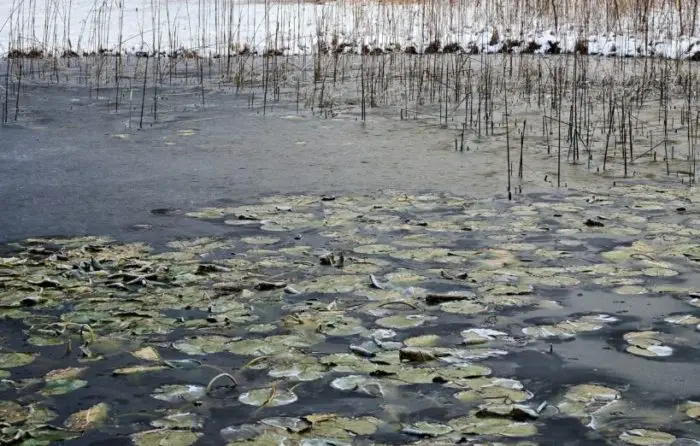There are a variety of reasons a pond can have a decreasing water level, but one of the many options is a leak in your pond liner. These can be replaced, and help your pond to retain its water.
The best time to replace a pond liner is during the colder months of the years, late autumn or early winter. This will cause the least amount of disturbance to the plant and animal life already existing within the pond. If necessary, a pond liner can be changed any time of the year.
Below, the specifics of a variety of situations is detailed. Changing a pond liner can take time and effort, but by accomplishing it you will be adding years of life to your pond and the ecosystem it supports.
When To Change the Pond Liner
Changing the pond liner in simple thought doesn’t seem like to big of a deal, but when we think of the specifics it becomes a much bigger job than at first glance. Changing it requires the removal of all the pond life, including the fish, the water, the plants, the rocks and any dirt or moss buildup.
The ecosystem of a pond is most active during the early spring and summer months as all animals and insects are out and about and the warmth of the air provides great breeding ground for all. Ripping the pond liner out now would cost that process a couple of weeks and would inhibit its ability to reach its complete summer potential.
In the autumn, when the summer time fever is cooling down is the best time to replace your pond liner. The insects are dying, the frogs headed into hibernation and the fishes heading into a more dormant phase of life.
Transition is already beginning to take place, and so adding in an additional cleaning process will not be as impactful. Doing it even later, after the winter stages of life are already taking place is also a good option because it will not disrupt the stagnant ecosystem.
Types of Pond Liners & How Often to Change
Surprisingly, pond liners can last a really long time if properly installed and taken care of. Depending upon the type of pond liner you choose, this may vary to a shorter or longer time period. The best time to change your pond liner is when it has been pushing that 30 year limit, when you see the pond beginning to drain, or you have somehow damaged the liner.
There are a variety of different types of liners which are highlighted and discussed here: “EPDM liners are made of a rubber material resembling a bicycle inner tube. They have the greatest overall flexibility and durability.
PVC pond liners also provide a flexible material to work with, but they are thinner and do not last as long, unless they are completely covered with soil. RPE liners are the strongest option, but they lack the flexibility of the others and are more expensive” Source. There are also welded polypropylene liners which are customizable to a certain shape or size.
How to Change the Pond Liner
To begin the process of changing the pond liner you will need large buckets, a place for you fish, a way to drain your pond, and a desire for hard work. First turn off the pond pump and any other electrical appliance in the pond, and grab 2 or 3 five gallon buckets and fill them with water from the top of the pond where the water is cleanest.
Then either pump, bucket, or siphon the water out of the pond, leaving about 18 inches of water in the bottom where you fish and plants will congregate.
Using a net take out the fish and place them and your plants in the 5 gallon buckets which have the natural pond water in them. Then finish draining the remainder of the pond and remove all the water and dirt that is piled up at the bottom. You will also need to remove any bricks, rocks, statues or other decorations which are sitting on the pond liner.
Roll the pond liner up and off of the ground. At this point it is important to check the ground for any large rocks or roots that could penetrate the new liner and cause for a quick hole. For an extra precaution, you can add a 2 inch layer of sand along the ground covering the entirety of the pond hole.
Now lay out your new pond liner out on over the pond hole. Be sure that it is not tight, but sits flats on all the edges of the pond. Try to get the least amount of wrinkles and folds as possible.
It is important for it not to be tight because once you fill it with water you will want the water to push the liner into all the crevasses and holes of the ground beneath, and not get stretched to the point of splitting. Then, add the water and begin refilling the pond and ironing out wrinkles as you go. Leave your water to sit for awhile before adding back in all your plants and fish.
Other Considerations
Often times there are other questions that come along with changing a pond liner. One of these questions is if pond liners can be placed over an old pond liner. The answer to this question is yes most of the time.
Unless there is a protruding object which punctured your old pond liner from underneath, or if there is no underlay to help protect it, it may be a good idea to take out the old one. If none of these are true for you, adding the new liner over the top should be fine and will allow for an extra layer of protection.

